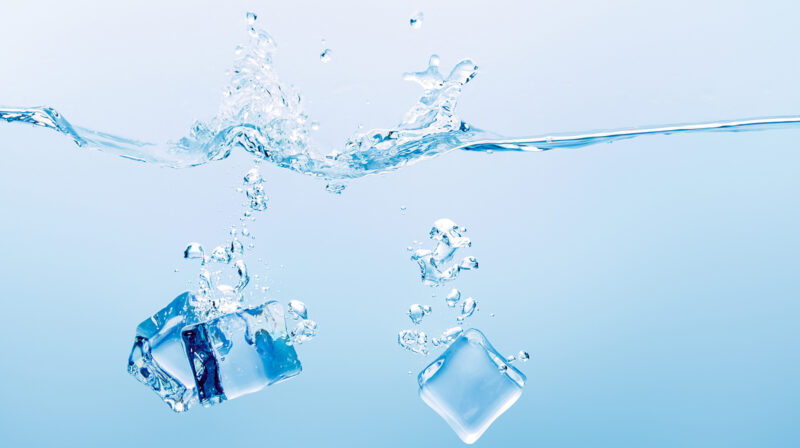Ice baths inhibit muscle growth
This article is verified by 2 studies/publications.

For a while now, many high-performance athletes have been taking ice baths right after training. Ice baths not only look cool, but the cold exposure is believed to intensify the training stimulus. But what’s the science behind it, and why do athletes even do it?
The idea behind ice baths is to reduce inflammation immediately after training and, in turn, speed up recovery after intense exertion. This phenomenon has been investigated in numerous studies. A 2011 meta-study confirms the beneficial effect of ice baths in shortening the recovery phase in endurance sports [1].
However, what’s good for the recovery phase isn’t necessarily good for muscle growth. A recent study looked into how cold exposure affects muscle protein synthesis rates [2].
The study involved twelve male participants with an average age of 21 who had to submerge both legs in water for 20 minutes after training. One leg was cooled with 8°C cold water, while the other leg stood in 30°C temperature-neutral water. After training, the subjects also consumed 20g of milk protein with 45g of carbohydrates.
Several muscle biopsies were taken before and after training to assess the myofibrillar protein synthesis rates, which are crucial for muscle growth.
By the end of the study, a clear effect of ice baths was observed, but not in favor of muscle growth. The intense cooling reduced amino acid uptake and significantly lowered protein synthesis rates after training. Over the two-week study period, the protein synthesis rate in the cooled leg was 12% lower.
Too long; didn’t read (Summary)
- Several studies suggest that ice baths can reduce the recovery time needed after exercise. One particular study investigated whether ice baths can also promote muscle growth.
- After exercise, the study participants were required to stand with one leg immersed in cold water.
- Analysis of tissue samples revealed that the rate of muscle protein synthesis was reduced after the intense cooling.
- The underlying cause for this is not yet clear, but it is thought that the decrease in blood flow to the muscles could limit the transportation of amino acids to the muscles.
- Because a reduced muscle protein synthesis rate can impede muscle growth, it is advisable to space out ice baths and strength training sessions as much as possible.
Unclear cause
The cause of this effect couldn’t be determined in the study. One of the main reasons athletes take ice baths is to reduce inflammation, as mentioned earlier. However, inflammation remained unchanged in this study, as did other markers related to synthesis regulation.
The most likely explanation at the moment is the direct influence of cold on blood flow. Intense cooling reduces blood flow, which in turn results in lower amino acid uptake overall.
In other words, cooling causes reduced blood flow to transport fewer amino acids into the muscles, potentially inhibiting muscle growth overall during a critical phase of the training stimulus reaction.
While the study’s unusual design doesn’t represent a real-life scenario, it does offer a good view of the effects of intense cooling thanks to very detailed measurements. Since most people don’t take 20-minute ice baths, a negative effect on muscle growth is likely to be less pronounced in normal cases than what this study showed. However, repeated ice baths over a longer period could lead to a reduction of the full potential for muscle growth.
Sources
- Cold water immersion and recovery from strenuous exercise: a meta-analysis. Leeder, J., Gissane, C., van Someren, K., Gregson, W., & Howatson, G. 2011. British Journal of Sports Medicine, 46(4), 233–240. doi:10.1136/bjsports-2011-090061
- Postexercise cooling impairs muscle protein synthesis rates in recreational athletes.Cas J. Fuchs, Imre W. K. Kouw, Tyler A. Churchward-Venne, Joey S. J. Smeets, Joan M. Senden, Wouter D. van Marken Lichtenbelt, Lex B. Verdijk, Luc J. C. van Loon. The Journal of Physiology. 2020. Volume 598, Issue, Pages 755-772. doi: https://doi.org/10.1113/JP278996